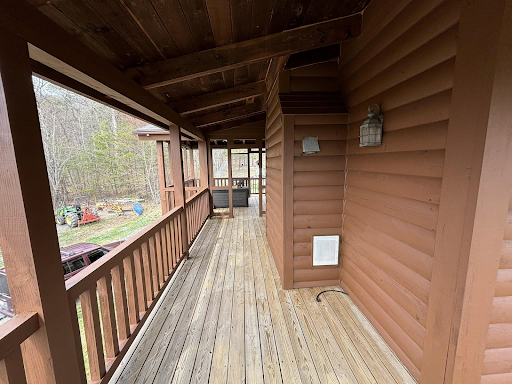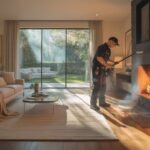Log homes elicit a sense of warmth, charm, and timeless craftsmanship. Their natural beauty and rustic appeal make them a favorite among homeowners who value both aesthetics and longevity. Still, the very traits that make log homes appealing—wood, humidity, and natural materials—also make them susceptible to a persistent adversary: fungi. Fungi, including molds and wood-decaying organisms, can compromise the structural integrity of your home, create health hazards, and diminish its aesthetic appeal. Protecting your log home from these threats is pivotal for extending its lifespan and maintaining a safe, comfortable living environment. Understanding how fungi operate, what conditions encourage their growth, and the strategies for prevention are essential aspects of ongoing log cabin maintenance that empower homeowners to safeguard their investment for generations.
Understanding Fungi and Their Impact on Log Homes
Fungi are bitsy organisms that thrive in surroundings with humidity, warmth, and organic material. In log homes, the rustic structure provides an ideal niche for fungal growth when humidity infiltrates the logs. Fungi can manifest in colorful forms, including face molds, mildew, and more destructive wood spoilage fungi, which can compromise the strength and continuity of the timber.
face molds frequently appear as discolored patches or a musty odor on walls, ceilings, or window frames. While they may feel purely ornamental, they can indicate humidity problems that, if left undressed, could escalate into more serious structural damage. Wood- decaying fungi, on the other hand, can access deep into the wood, weakening shafts, logs, and other critical factors. This decay not only undermines the stability of the home but can also affect in expensive repairs if it progresses unbounded.
The impact of fungi extends beyond structural enterprises. earth and mildew spores can affect inner air quality, leading to respiratory problems, disinclinations, and other health issues for the inhabitants. A log home that has been compromised by fungal growth may also suffer from aesthetic declination, with stained, depraved, or leveled logs diverting from its visual appeal.
Factors That Encourage Fungal Growth
precluding fungal growth requires understanding the conditions that allow it to thrive. humidity is the primary factor. Log homes are particularly vulnerable because wood is naturally pervious and can absorb water from rain, moisture, or leaks. Areas of the home that are inadequately voiced, shadowed, or prone to condensation are especially at threat.
Temperature also plays a part. Fungi tend to flourish in warm, sticky surroundings, making regions with high downfall or significant seasonal humidity oscillations more susceptible. also, organic debris similar as leaves, soil, and factory matter accumulating near the base of logs can produce microenvironments conducive to fungal growth.
Construction and conservation practices can either complicate or alleviate these pitfalls. indecorous sealing, gaps in caulking, shy staining, or inadequate roof protuberances can allow water to insinuate the wood, furnishing a parentage ground for fungi. Likewise, neglecting routine examinations and conservation can allow minor issues to develop into major infestations.
Effective Strategies for guarding Your Log Home
Protection against fungi begins with precluding humidity from reaching the wood. Applying high- quality wood stains or sealants forms a hedge that repels water while allowing the wood to breathe. Regularly examining these coatings and reapplying them as demanded ensures nonstop protection against humidity penetration.
Proper design considerations are also essential. Acceptable roof protuberances, gutters, and drainage systems help divert rainwater down from the home’s surface. Maintaining a clear border around the structure, free from soil, leaves, and other organic debris, reduces the threat of fungi establishing themselves near the wood. icing good ventilation, both within the home and in enclosed areas like bottleneck spaces or garrets, helps manage moisture and help condensation buildup.
Routine examinations are another foundation of fungal forestallment. Homeowners should regularly examine their logs for signs of abrasion, wimpiness, or a musty odor. Beforehand discovery allows for prompt remediation, minimizing the eventuality for wide damage. When problems are linked, targeted treatments, similar as applying antifungal results or replacing affected logs, can halt farther deterioration.
In addition to physical interventions, maintaining an overall dry and controlled inner terrain is critical. Using dehumidifiers, covering moisture situations, and icing proper sequestration each contribute to creating conditions that are negative to fungal growth. Addressing leaks, roof damage, or plumbing issues instantly prevents humidity from getting a patient problem.
Long- Term conservation and Alert
guarding a log home from fungi is n’t a one- time trouble but a nonstop process. Establishing a routine conservation schedule that includes examining surface logs, checking seals and stains, and covering drainage systems is vital for long- term preservation. Seasonal changes, particularly ages of heavy rain or high moisture, should prompt fresh alert, as these are high times for fungal exertion.
Homeowners should also be visionary in educating themselves about the types of fungi that generally affect log structures and the signs to watch for. Feting early pointers, similar as dark spots, fuzziness on wood shells, or unusual odors, allows for timely intervention. In cases where damage is expansive, consulting a professional with moxie in log home conservation can insure that repairs are conducted effectively, conserving both structural integrity and aesthetic value.
Beyond structural considerations, guarding your log home from fungi also preserves its health and comfort for inhabitants. icing that inner air quality remains high by controlling humidity and barring fungal growth contributes to a healthier living terrain, reducing the threat of respiratory issues and disinclinations.
Conclusion
Fungi pose a significant challenge for log homeowners, threatening both the structural stability and overall appeal of these cherished residences. Understanding the conditions that foster fungal growth, enforcing preventative measures, and maintaining a watchful inspection routine are essential for securing your home. From applying protective coatings to managing humidity and ensuring proper ventilation, every step contributes to creating an environment that resists fungal intrusion.
For homeowners seeking professional support, searching for log cabin contractors near me in Winchester, Virginia can connect you with experts who specialize in preserving and maintaining log homes. By investing in skilled care and thoughtful conservation, log homeowners can enjoy the timeless beauty and warmth of their homes without the threat of fungal damage. Protecting your log home from fungi isn’t simply about preserving wood; it’s about securing a safe, healthy, and enduring sanctuary for generations to come. With diligence and informed practices, your log home can continue to stand as a testament to craftsmanship and adaptability, free from the destructive grasp of fungi.


